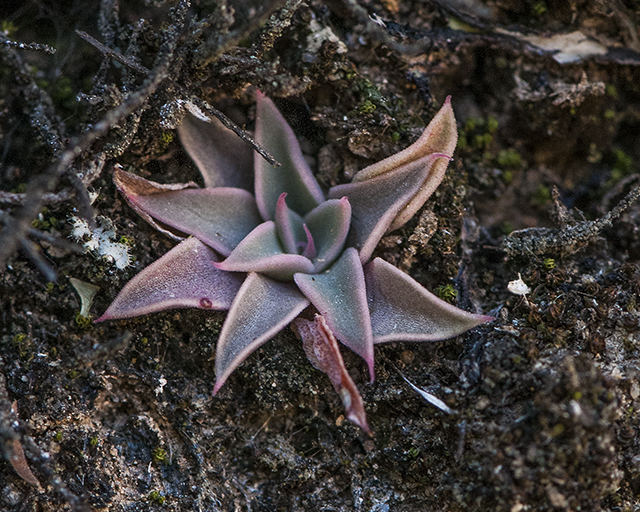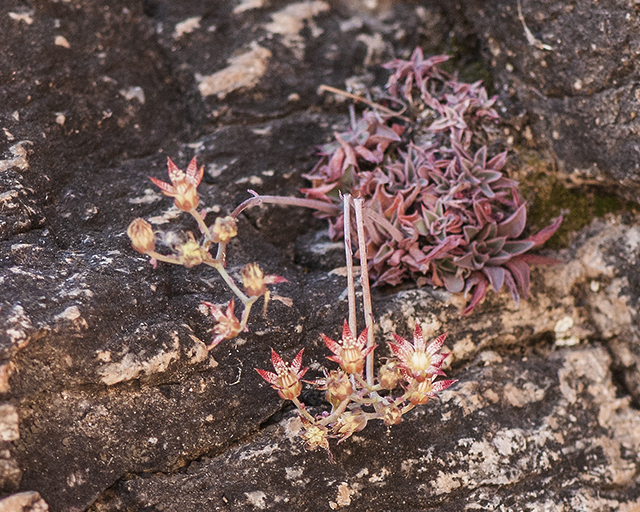Wildflowers of Southern Arizona
San Francisco River Leatherpetal.
Graptopetalum rusbyi.
Stonecrop (Crassulaceae) family.
Duration: Perennial. Nativity: Native. Lifeform: Succulent. General: Succulent perennials, to 35 cm tall, stems reddish with ascending, slender branches, floral stems annual, axillary, overtopping rosette, with scattered smaller leaves, herbage glabrous or papillose. Leaves: Alternate, persistent, in densely tufted, basal rosettes, rosettes 10-50-leaved, 2-10 cm in diameter, blades green or reddish, rhombic-obovate to oblanceolate, 1.5-5 cm long and to 2 cm wide, apices with slender apiculum 1-3 mm, cauline or infloresence leaves (proximal) leaves 2-18 mm long, surfaces rough, especially on the margins and keel with peglike or subclavate nodules (papillae), not glaucous, blades sessile or subclasping and narrowing basally. Flowers: Deep maroon with white or cream-colored spots and stripes and yellow centers, appearing to have spreading, lanceolate petals, 5-8-merous, corollas 14-21 mm in diameter, tubes 2-3.5 mm long, lobes 7-10.5 mm long and 1.2-2.5 mm wide, pistils not hollowed near base, gradually narrowed to styles 1-1.5 mm long, inflorescences mostly flat cymes, floral stems 4-18 cm long, branches mostly 2-5, circinate or not, 1-12-flowered, pedicels mostly 3-8 mm long. Fruits: Whorls of follicles, each follicle dehiscent along an adaxial suture, unripe follicles erect. Seeds 1-20 or more, brown, narrowly ovoid, surfaces finely grooved with small nodules (papillose). Ecology: Found in open places among rocks, in rock crevices, especially on north slopes and on shaded cliffs, from 0-5,500 ft (0-1676 m); flowering late spring. Distribution: Arizona; Mexico. Notes: This interesting plant has fleshy and succulent leaves and stems, the individuals often growing in small mats. The deep green leaves in dense, wrinkly rosettes sprout brownish-red stems of striking flowers subtended by smaller proximal leaves. The flowers appear to have 5-8 thin and lanceolate petals (actually sepals) of deep maroon with cream-colored white spots and stripes and yellow centers. When not in bloom, the buds are thick and reddish-green or yellowish. Look for this species in Arizona in Greenlee, Graham, Gila, Maricopa, Pinal, and Pima counties. Etymology: The meaning of echeveria is unknown, and rusbyi is named after Henry Hurd Rusby (1855-1940).
Santa Catalina Mountains.
Location: Molino Basin.
5/5/17
Notes: Sabino Canyon 4/7/17
See SEINet Pictures and Description


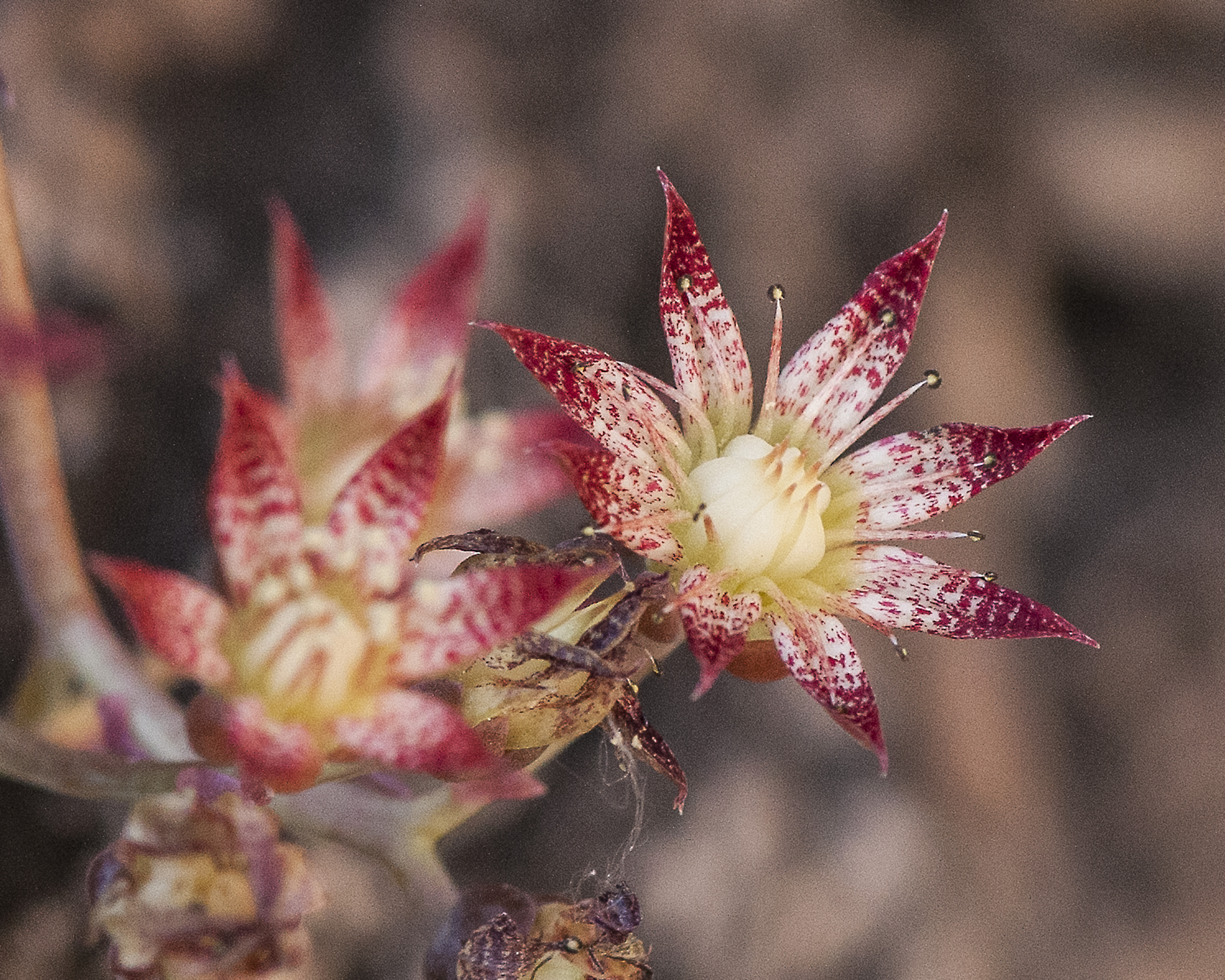
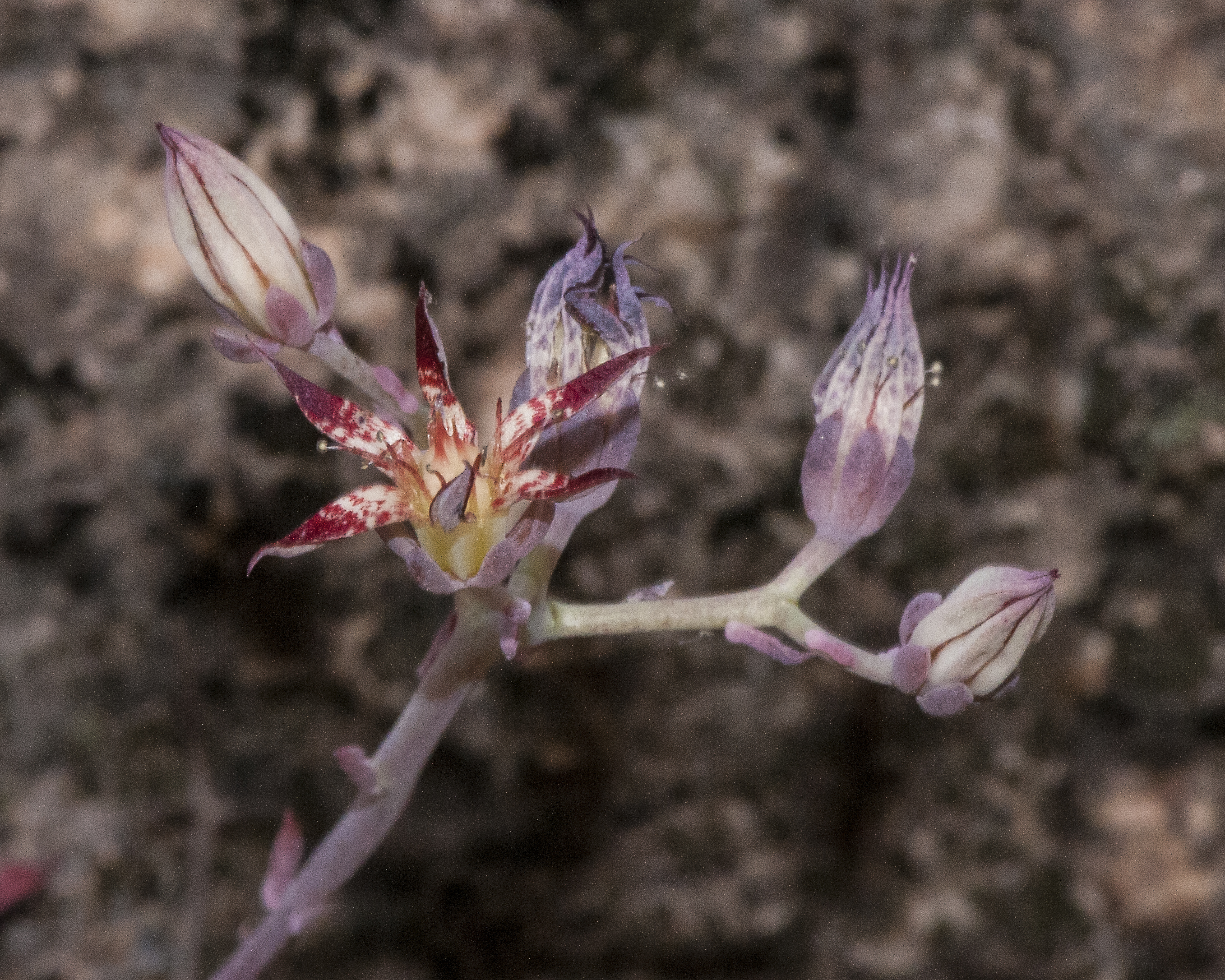
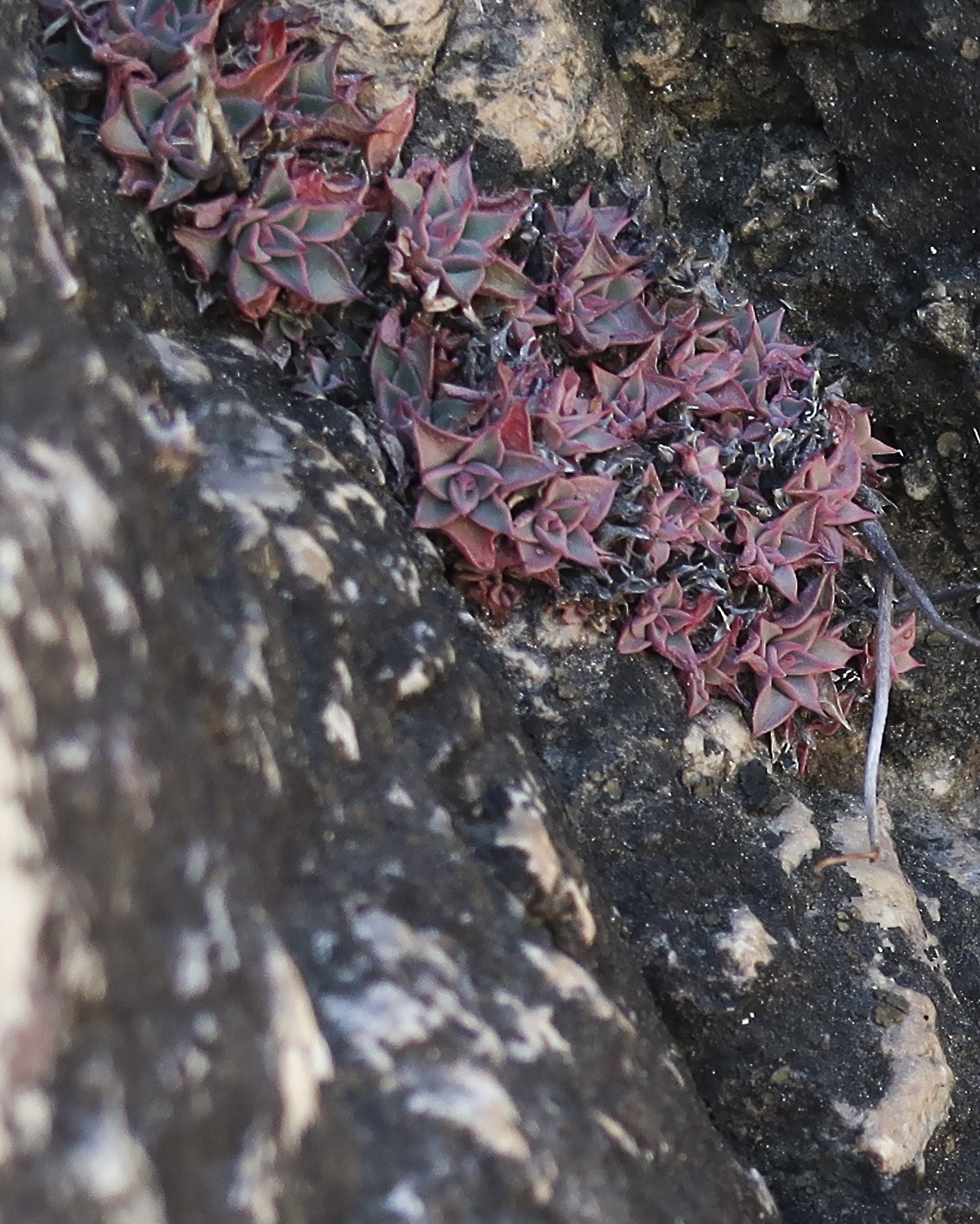 Sabino Canyon 4/7/17
Sabino Canyon 4/7/17
